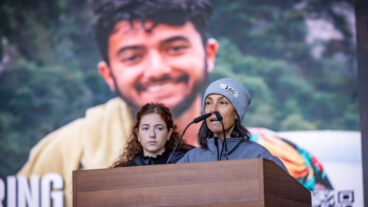An Israeli math professor is receiving international recognition for her educational program, with methods that have students outperforming their peers.

Students trained with Prof. Michal Yerushalmy’s function-based VisualMath curriculum systematically build up their understanding of algebra, calculus, and geometry so significantly that they score better than average on standardized tests.
Those who study with VisualMath also move on to higher-level math classes in high school, out-perform peers in solving algebra word problems and complex new problems, and display a superior ability to devise strategies for identifying and correcting mistakes.
In recognition of her contribution to mathematics education, Yerushalmy – director of the University of Haifa’s Institute for Research of Alternatives in Education in Israel – recently received a $10,000 “Eddie” prize from the International Society for Design and Development in Education for excellence in design of educational products and materials in science or mathematics.
The award, announced in September in Oxford, England, took Yerushalmy by surprise. Now on sabbatical in India, she has spent the past 25 years developing and tweaking VisualMath and its related Math4Mobile system of Java applications designed to foster intuitive “mLearning” using mobile phones.
Credit to Israel for innovative curriculum
Speaking from Bangalore, where she is conducting research at the International Institute of Information Technology and training local teachers to incorporate Math4Mobile in grades seven through 12, Yerushalmy tells ISRAEL21c that the Eddie “acknowledges that Israel is developing accessible inquiry-based math curriculum materials for us and for the rest of the world.”
“Inquiry-based” means that it relies on experimentation rather than repetition and memorization.
She and Prof. Judah Schwartz began developing the concept in the 1980s at Harvard University. After returning to the University of Haifa, she worked with research students and a team from the Center for Educational Technology in Ramat Aviv to create the first edition of VisualMath in 1992.
“The prize was given for the work done in Israel,” she stresses. “In the US, we developed the idea but not the curriculum.”
Web-based, e-learning approach
Partially supported by the Ministry of Education, VisualMath is innovative not only for its technology-based approach but also for its design as a full curriculum covering the required syllabus rather than as an enrichment program.
Originally, Yerushalmy designed VisualMath for personal computers, supplemented by paper texts. She later began transitioning to web-based eBooks. Used by teachers in Israel and several other countries, the eBooks contain hundreds of interactive tools and exercise libraries that allow students to strengthen mathematical skills through solving computer-generated problems with the help of diagrams.
“VisualMath has been continuously implemented in small steps for more than two decades,” she says. “Curriculum, especially paired with technology, is dead if you don’t constantly touch it.”
During previous travels to India, Yerushalmy saw that students were more likely to have cell phones than computers, and that even in schools equipped with PCs, Internet service was sometimes spotty. So she tapped into the expertise of University of Haifa computer science students Arik Weizman and Zohar Shavit to make VisualMath accessible to an even greater number of classrooms.
Interacting around mathematics
http://www.youtube.com/watch?v=ILmEr7-Va_U
The result was Math4Mobile, Java applications that can be installed on most cell phones, enabling these devices to perform mathematical functions from elementary school geometry to high school calculus. It has proved to be a hit with teachers in several countries, particularly in South America and South Africa. This new approach is also being piloted in Israeli-Arab schools under the auspices of the Al-Kasemi Academic College of Education.
In another pilot project supervised by the University of Haifa’s Faculty of Education, students were asked to use their mobile phones to videotape an everyday motion, such as a bus leaving a stop. They then translated these clips into mathematical models using Math4Mobile applications on their phones.
The researchers noted that kids texted one another to share information, ask questions, and comment on the assignment – just the kind of “inquiry-based” learning Yerushalmy is aiming to achieve.
An even newer VisualMath development, the result of “lessons learned from our long study of the challenge of whole-class inquiry,” is dubbed Click2Go. This WiFi-based teaching tool works like a voting system with a mobile phone, Yerushalmy explains.
“You send your work to the smart board and talk about it with the teacher,” she says. “It’s all about talking about mathematics.”

















